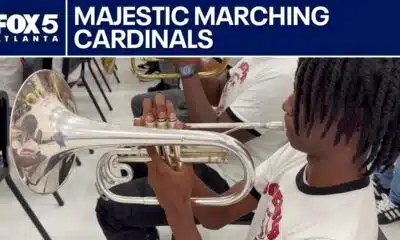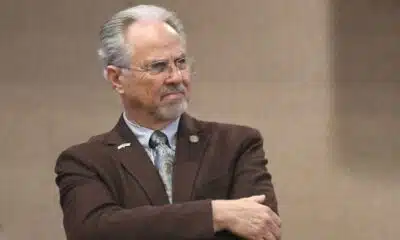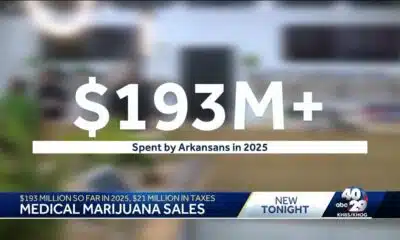News from the South - South Carolina News Feed
WATCH: Five Gamecocks selected in 2025 NFL Draft
SUMMARY: In 2025, Gamecock football celebrated a historic milestone with five players drafted in the first four rounds of the NFL draft. Notable selections include Nick Emmanwori, chosen 35th overall by the Seattle Seahawks, who excelled in his collegiate career with impressive defensive stats. T.J. Sanders went to the Buffalo Bills at 41st, recognized as a standout defensive player. Demetrius Knight Jr. was picked by the Bengals, showcasing leadership and defensive prowess. Kyle Kennard and Tonka Hemingway were selected by the Chargers and Raiders, respectively, both having significant collegiate achievements. This draft marks an exceptional year for Gamecock football.
The post WATCH: Five Gamecocks selected in 2025 NFL Draft appeared first on www.abccolumbia.com
News from the South - South Carolina News Feed
Florence man sentenced to life in prison for killing girlfriend
SUMMARY: A Florence man, 50-year-old Derek Brunson, was sentenced to life in prison for the 2021 murder of his girlfriend, 31-year-old Caitlin Shipman, a mother of five. After a hung jury in his first trial, the second trial concluded in under an hour with a unanimous guilty verdict. Prosecutors described the killing as cold and methodical, highlighting Caitlin’s history of abuse and her coworkers’ testimonies about her fearful warnings. During sentencing, two of Caitlin’s children expressed relief that Brunson would be imprisoned for life. Family members hope this verdict brings justice and peace for Caitlin. Brunson’s defense claimed investigation flaws.
On Friday, Derrick Brunson was found guilty of murdering his girlfriend in May 2021 after a retrial. S.C. Circuit Court Judge Steven …
News from the South - South Carolina News Feed
High School football highlights: 9.12.25 (Part 1)
SUMMARY: The high school football highlights from Week 3 feature key matchups, including the undefeated Eastside Eagles’ 56-21 win over Blue Ridge, extending their nine-game winning streak against the Tigers. Westside started 0-2, losing 42-6 to unbeaten BHP Bears. Woodruff dominated Woodmont 48-6, while Powdersville won 35-7 at Pendleton, continuing their three-game streak. Dale Hannah secured a 40-27 victory over Wren. Byrnes defeated Greer 49-9, powered by Trey Segarra’s three touchdowns. Other notable results: Emerald beat Broome 42-18, Berea earned their first win vs. Southside, and Abbeville topped 96. A.C. Flora shut out Laurens 35-0. Coaches remain focused on improvement and upcoming region games.
High School football highlights: 9.12.25 (Part 1)
WYFF 4 is your home for South Carolina breaking news and weather. For your latest South Carolina news and weather visit: https://www.wyff4.com/
For licensing inquiries: https://www.wyff4.com/licensing
News from the South - South Carolina News Feed
Suspect arrested, identified in shooting of Charlie Kirk, officials say
SUMMARY: A suspect, Tyler Robinson, has been arrested in the fatal shooting of conservative activist Charlie Kirk at Utah Valley University. Utah Gov. Spencer Cox confirmed the arrest, with President Trump also confirming custody and supporting the death penalty. Robinson’s father identified and convinced him to surrender. Authorities recovered a bolt-action rifle believed to be the murder weapon, with unusual cartridge markings under investigation. The shooting occurred from a rooftop during a public event, with Kirk killed by a single shot. Over 7,000 tips were received during the manhunt. Officials vow to hold the shooter accountable, calling it a “political assassination.”
The post Suspect arrested, identified in shooting of Charlie Kirk, officials say appeared first on www.abccolumbia.com
-
News from the South - Alabama News Feed7 days ago
Alabama lawmaker revives bill to allow chaplains in public schools
-
News from the South - Missouri News Feed7 days ago
Pulaski County town faces scrutiny after fatal overdose
-
News from the South - Arkansas News Feed7 days ago
Arkansas’s morning headlines | Sept. 9, 2025
-
News from the South - Arkansas News Feed6 days ago
Group in lawsuit say Franklin county prison land was bought before it was inspected
-
News from the South - Kentucky News Feed5 days ago
Lexington man accused of carjacking, firing gun during police chase faces federal firearm charge
-
Mississippi News Video7 days ago
2025 Mississippi Book Festival announces sponsorship
-
News from the South - Arkansas News Feed5 days ago
Arkansas medical marijuana sales on pace for record year
-
The Center Square6 days ago
California mother says daughter killed herself after being transitioned by school | California













































